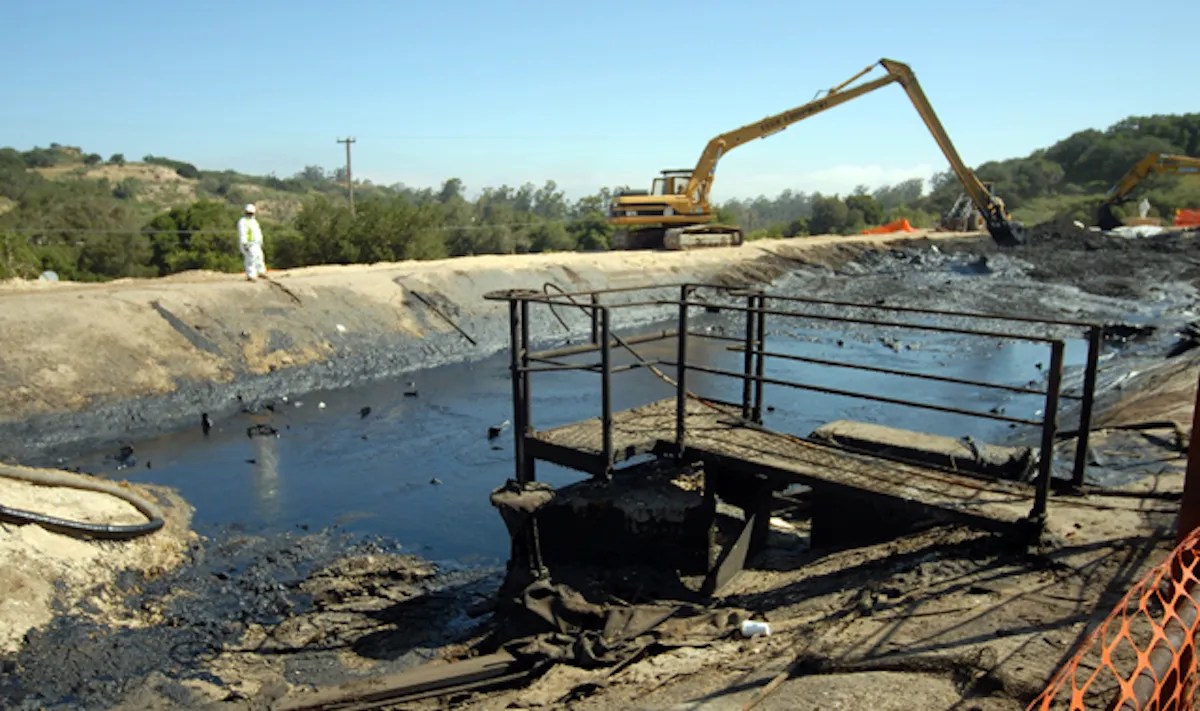Passage of the county’s Climate Action Plan last year prompted a discussion about oil and gas production and the economic, health, and environmental benefits of an oil phase out. On May 13, 2025, Santa Barbara County supervisors voted to phase out oil drilling, which will save lives, reduce air pollution, and help meet our climate goals. Staff will present a phase-out plan on October 21.
Oil production in Santa Barbara County has declined. As a Stanford report explains, “the days of gushers are long gone, leaving behind substantially depleted oil fields containing heavy crude oil, often tucked into folded geology, that is difficult to extract. Today’s drillers typically inject steam or hot water into the reservoir to lower the oil’s viscosity and increase its flow, a process often fueled by burning natural gas. Those enhancement techniques are energy-intensive and expensive.”
Revenues to the county from local oil production are now just $1.7 million in property taxes or approximately 0.1 percent of county revenues. Compare that to the $36 million it cost taxpayers to plug 171 orphan wells left behind by HVI Cat Canyon/Greka after their bankruptcy. This risk has increased as oil companies have sold their assets to smaller, speculative ventures that are at higher risk of going bankrupt.
Despite declines, oil production remains a significant source of air pollution. A report found that oil and gas production in 2023 generated 132,356 metric tons of carbon dioxide equivalent (MtCO2e), which is roughly 11 percent of the estimated 1.2 million MtCO2e total tracked in the county Climate Action Plan — more than that contributed by electricity use in buildings.
According to the California Air Resources Board, oil production is also the largest facility source of health-damaging air pollutants such as PM 2.5, a pollutant that can enter people’s lungs and bloodstream, leading to increased risk of heart disease, aggravated asthma, diabetes, and premature death; VOCs, which can cause difficulty breathing, damage the central nervous system; and increase cancer risk, and benzene, another known carcinogen. In Santa Barbara County, 40 percent of oil and gas wells are within one mile of sensitive areas such as schools, hospitals, and residential areas.
And it could get worse. Oil projects proposed over the past decade illustrate what could happen if we do not have a phase-out plan in place. In 2016, Santa Barbara County denied Pacific Coast Energy’s proposal to drill up to 144 new cyclic steam injection oil wells on Orcutt Hill due to unavoidable impacts to water quality and endangered and sensitive species. The county found that the company’s existing steaming operations had resulted in 99 oil seeps requiring emergency permits for capping and controlling the oil seepage, explosive well-casing failures, and surface heaving and cracks related to steaming. An environmental review of the project concluded that it could cause additional seeps and spills into creeks and watersheds.
In 2020, several projects totaling 760 oil wells in the Cat Canyon oil field were withdrawn after facing intense opposition. The projects proposed drilling through the Santa Maria Groundwater Basin, the primary source of drinking and agricultural water in northern Santa Barbara County. Each project would have used around 7 million gallons of fresh water per year. The projects required trucking in oil to mix with the tar-like, heavy oil to keep it liquefied, and trucking the combined oil back out again, resulting in hundreds of tanker truck trips on local roads. Trucks spill more than pipelines and have six times the fatality rate. Finally, the energy-intensive form of production would have dramatically increased greenhouse gas emissions in the county, generating 759,968 MtCO2e — five times the 2023 oil and gas emissions.
In voting to phase out oil, the majority of supervisors cited the devastating costs of climate disasters, such as the wildfires and Montecito mudslide that killed 23 people, the backsliding and climate denial under the Trump administration that makes local action more urgent, and the health savings and other benefits of phasing out oil pollution near people’s homes, businesses and in proximity to critical drinking water supplies.
Just as setting 100 percent renewable energy goals and joining Central Coast Community Energy has allowed Santa Barbara County to participate in a planned and affordable transition to renewable energy, setting a goal to phase out fossil fuel production will help the county plan an orderly transition away from oil and gas.
Consider this: Workers are needed to plug oil wells. According to analyses by RFF and Sierra Club, capping the 2,348 active and idle wells in the county could create between 564 and 1,268 jobs. And landowners and industry can turn to other productive uses for their land, such as housing or renewable energy projects, instead of costly proposals that conflict with county efforts to protect our air, water, health, and climate.
To support the oil phase out plan, email the supervisors at clerk@countyofsb.org before October 21.
